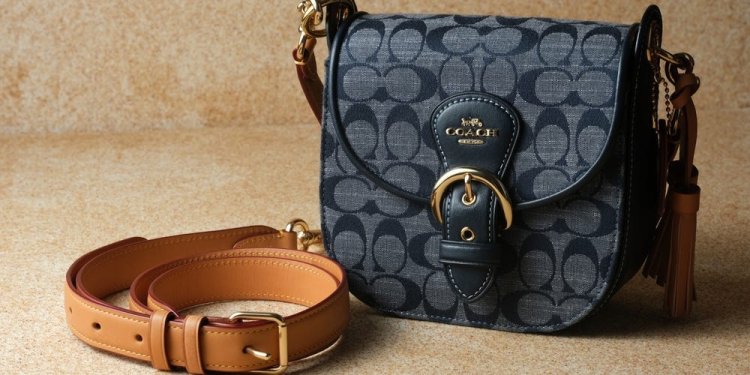I'm a sales associate at Coach. Here's how I spot fake bags — it's easier than you'd think.
As a sales associate at Coach, I wasn't fully taught how to spot fake bags during my training process, but I've learned how as I go.

fitzcrittle/Shutterstock
- I work at Coach, and spotting fake bags is pretty easy.
- I check the hang tags and story patches to see if a bag is authentic.
- Fake purses often have sloppy stitching and shiny, lightweight hardware.
I've been a fan of Coach for a while, and I now work as a sales associate for the brand.
I wasn't fully taught how to spot fake bags during my training process, but I've found many employees learn as they go.
Throughout my time with Coach, I've encountered a few fakes, and spotting them is easier than you might think.
There are exceptions — for example, some types of Coach bags don't have style patches or were released before the hang tag became a staple — but here's what I look for when authenticating a bag.
Story patches are the key feature of most Coach bags
Most Coach bags have a leather creed or story patch, which is a leather patch inside a bag that's embossed with the bag's serial number and history.
Sometimes people try to make fakes of these patches, but they don't really work.
One time, a customer brought in a bag for repair. When inspecting it to find the bag style, I noticed the story patch had a serial number that had never existed in the Coach database.
I always check the leather and material of the bag — especially on the hang tag
Isabella Merchan
Quality and material play a big factor in determining a fake.
First, I check the material of the hang tag, which every Coach bag has come with for decades.
An authentic bag should have a tag made of the exact leather used on the bag. It should also feel thick. To me, a flimsy, low-quality hang tag often screams a bag is fake. The leather often doesn't match the bag and is very thin.
If you choose to remove a hang tag from your real Coach bag, you might want to keep it anyway to help prove authenticity later on.
Also, just touching a bag can be telling. For example, fakes I've seen of the popular Tabby bag, which has a "C" on the front, has leather that isn't pebbled or smooth and buttery — it has a plastic-y feel.
It's also good to compare the color of the bag to the official Coach listings of the bag online. Fakes tend not to quite be the right shade.
Hardware often makes the real bags heavier
Isabella Merchan
Hardware seems to be a giveaway for a lot of fakes I've seen, even when it comes to other high-end bag brands. Sometimes I can spot a fake just by looking at its clips and clasps.
One of Coach's main choices of hardware is brass, which isn't very shiny. A lot of fakes I see have plated-gold hardware, which looks super bright and shiny.
Brass — and nickel, another popular Coach choice — also tends to be heavier, so I've found many fake bags are lighter in weight.
I check for sloppy stitching and edges, too
Coach takes pride in the craftsmanship of its products, especially when it comes to its edges, stitches, and zippers.
When looking for a fake, I look at the edges and tips of the bags since that is a spot that is more visible for the sloppy overstitching.
Most times, when a fake comes in, the stitching is very sloppy and/or crooked.
When in doubt, check your sources
Buying a bag directly from Coach is a safe bet.
Some trustworthy sites include Coach.com, Coachoutlet.com, and department stores that are official Coach retailers.
If you're shopping secondhand, do your research about who you may be purchasing from and how they authenticate items.
What's Your Reaction?




















